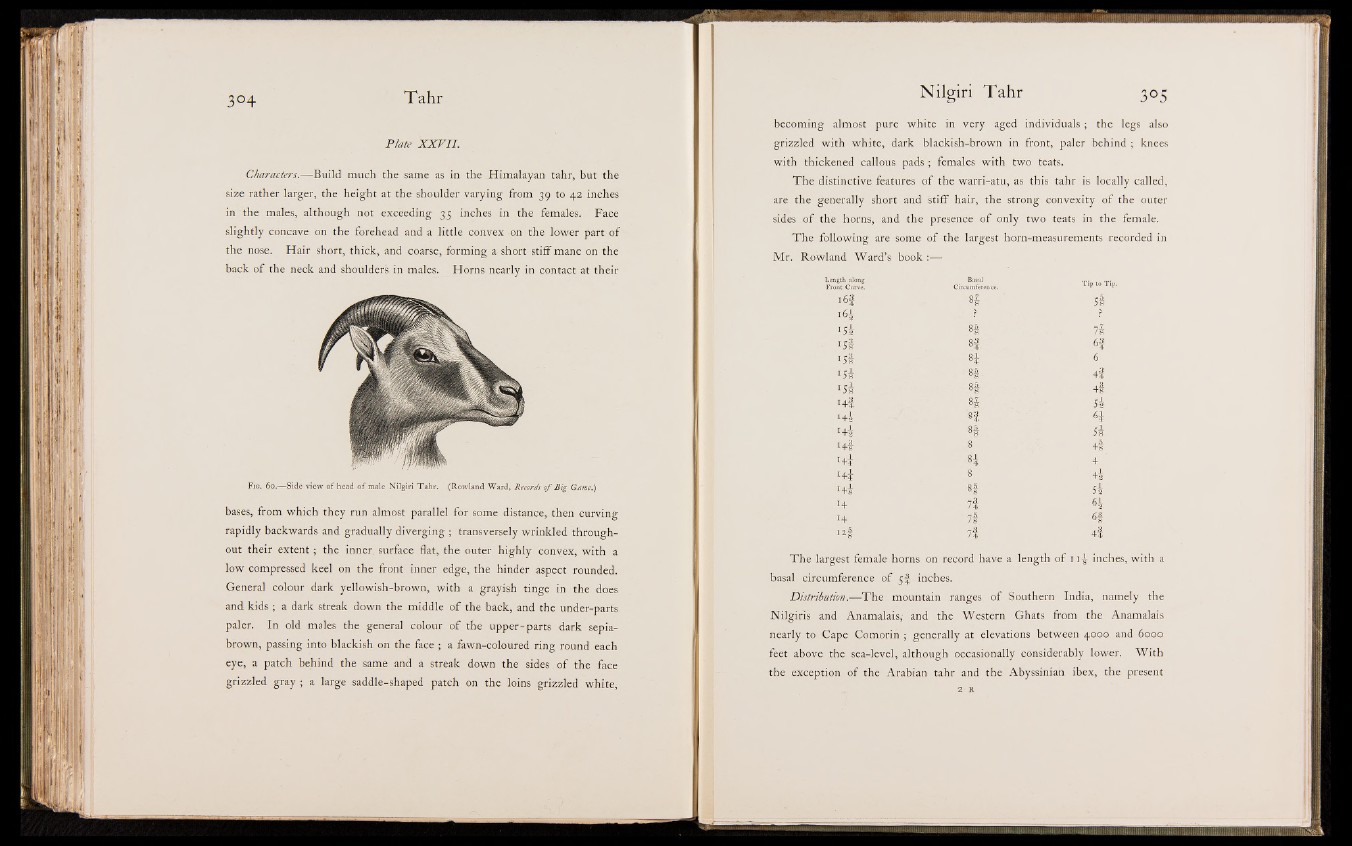
Plate X X V II.
Characters.—Build much the same as in the Himalayan tahr, but the
size rather larger, the height at the shoulder varying from 39 to 42 inches
in the males, although not exceeding 35 inches in the females. Face
slightly concave on the forehead and a little convex -on the lower part of
the nose. Hair short, thick, and cojfese, forming a short stiff mane on the
back of the neck and shoulders in males. Horns nearly in contact at their
Fig. 6o.-r-Side view of head of male Nilgiri Tahr.(Rowland Ward, Records o f B ig Game.)
bases, from which they run almost parallel for-, some distance, then curving
rapidly backwards and gradually diverging ; transversely wrinkled throughout
their extent; the inner, surface flat, the outer highly convex, with a
low compressed keel on the front inner edge, the hinder aspect rounded.
General colour dark yellowish-brown, with a grayish tinge in the does
and kids; a dark streak down the middle of the back, and the under-parts
paler. In old males the general colour of tfie. upper-parts dark sepia-
brown, passing into blackish on the face ; a fawn-coloured ring round each
eye, a patch behind the same and ® f streak down the sides of the face
grizzled gray ; a large saddle-shaped patch on the loins grizzled white,
becoming almost pure white in very aged individuals; the legs also
grizzled with white, dark blackish-brown in front, paler behind ; knees
with thickened callous pads ; females with two teats.
The distinctive, feature^pf the warri-atu, as this tahr is locally called,
are the generally short and stiff hair, the strong convexity of the outer
sides of the horns, B id the presence of only two teats in the female.
The following are some of the largest horn-measurements recorded in
Mr. Rowland Ward’s booklj^^B
Length along Basal Front Curve. 'Circumference. Tip to Ti
■ y 8 J 5ft
16 4 BBaBI ?
Hi v M
h} - B ■
H.t B | 6
- m ' HK-- m
B l m sm 4#
h I » 1 1
Hi 1 w
n » 1 : Si
H§ .8 4-1
H |- 4
h ! 8 4i
Hi n : Si
HH
m m 6ft
m 1 % i" 4§
The largest female ,^orns on iMMjrd have a length of 1 r-j- inche„s, with a
basal circumference raf 5 § . inches.
Distribution.— The mountain ranges, of Btuthern India, namely the
Nilgiris and Anamalaisiiand the Western Ghats from the Anamalais
nearly to Cape Comorin ; generally at elevations between 4000 and 6000
feet above the sea-level, although occasionally considerably lower. With
the exception of the Arabian tahr and the Abyssinian ibex, the present
2' R